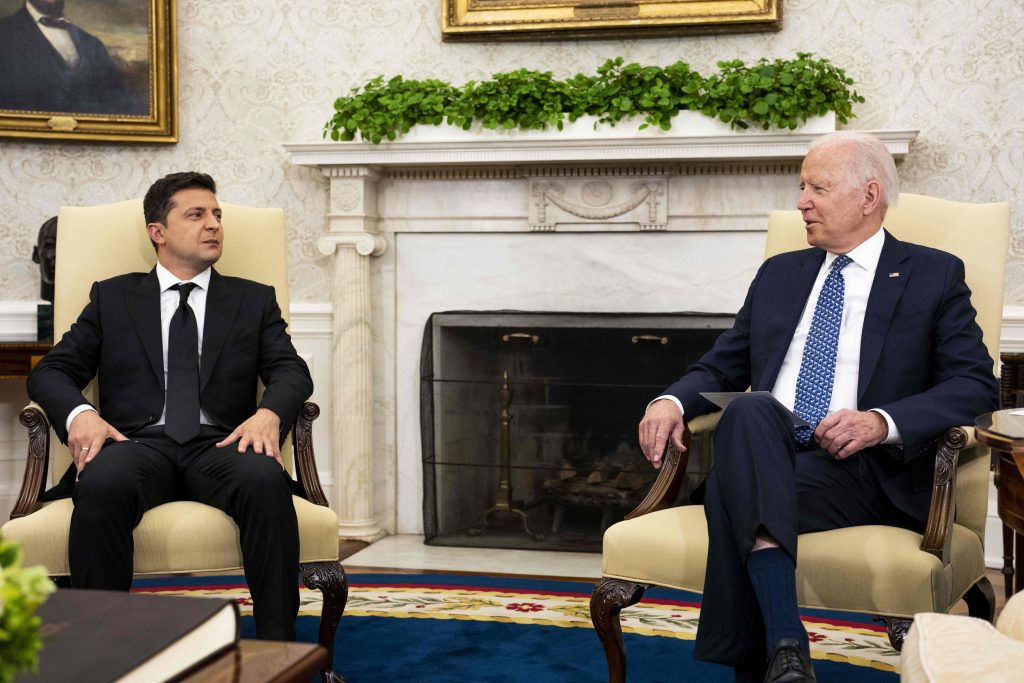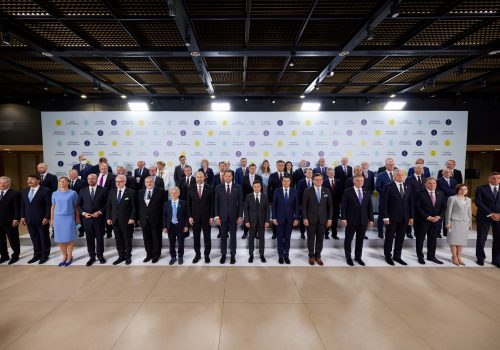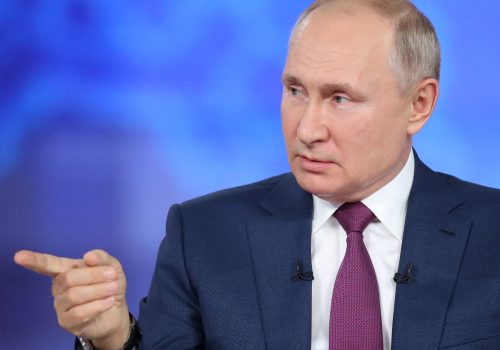US President Joe Biden hosted Ukrainian President Volodymyr Zelenskyy at the White House on September 1 for a meeting that sought to draw a line under an unusually rocky period in bilateral ties between the two longstanding partners and reaffirm America’s unwavering commitment to Ukrainian sovereignty.
The United States has been a key ally and supporter of Ukraine ever since the former Soviet republic first regained independence in 1991, with Ukrainian issues typically enjoying strong bipartisan support in Washington. US backing has been particularly important for Ukraine since the onset of Russian aggression in spring 2014. Now in its eighth year, this undeclared war with Russia has made Ukraine a key battleground in the geopolitical struggle between democracy and authoritarianism, and has enhanced the country’s position among America’s foreign policy priorities.
Strains in the US-Ukraine relationship first began to emerge during the early years of the Trump presidency, with Kyiv finding itself increasingly dragged into partisan domestic US political battles in a process that culminated with Ukraine playing a central role in the first impeachment of President Trump.
This turbulence meant many in Kyiv reacted with optimism to the November 2020 election of Joe Biden, who had earlier overseen the Ukraine portfolio as Vice President during the Obama administration. However, Biden’s May 2021 decision to relax sanctions of Russia’s Nord Stream 2 pipeline sparked a wave of dismay in Kyiv, while some Ukrainians have also been unnerved by the disastrous recent US withdrawal from Afghanistan.
This unfavorable backdrop helped generate considerable anticipation ahead of Wednesday’s meeting in Washington. In the end, the event proved somewhat anticlimactic and produced no major breakthroughs. Zelenskyy’s calls for a more robust American stance regarding Ukraine’s NATO membership aspirations proved fruitless, while there was no US U-turn on the thorny issue of Putin’s pipeline.
Instead, the meeting produced a series of solid if unspectacular commitments to strengthen cooperation in the security sector and a number of other spheres. A detailed joint statement issued after the meeting set out a road map for the deepening of the strategic relationship between the two countries.
While some in Kyiv had hoped for more, Wednesday’s meeting has been welcomed by others as a return to the kind of stable partnership that has defined US-Ukrainian relations for much of the past three decades. The Atlantic Council invited a range of American and Ukrainian experts to share their thoughts on what this week’s Biden-Zelenskyy meeting means for the future of bilateral ties.
Alexander Vershbow, Distinguished Fellow, Atlantic Council: The Zelenskyy-Biden meeting was a success for both sides. Biden made clear that Ukraine’s security remains a US priority, dispelling doubts about the US commitment that had arisen from the Nord Stream 2 decision, the chaotic exit from Afghanistan, and the perceived prioritization of Russia since Biden’s meeting with Putin in June.
The two presidents issued a meaty joint statement laying out a robust agenda for renewed cooperation on multiple fronts including defense, energy security, climate change, investment, space, and research and development. The sides agreed to disagree on whether to stop Nord Stream 2, focusing instead on mitigating the risks and imposing costs on Moscow if it uses the pipeline as a geopolitical weapon. Zelenskyy reaffirmed his commitment to reforms and the rule of law that will be essential if Ukraine is to take full advantage of the initiatives in the joint statement and attract foreign investment.
The results of the meeting were more mixed on defense and security. The sides agreed on a new Strategic Defense Framework to guide cooperation and the US offered an additional USD 60 million in defense assistance, including more Javelin anti-tank weapons. But with Russian forces along Ukraine’s borders on a war footing since spring, and with Putin’s recent pseudo-historical essay challenging Ukraine’s legitimacy as a state, more assistance is needed to ensure Russia is deterred from another land grab while the West is in disarray over Afghanistan. As part of this, the US should get other NATO countries more involved in equipping and training the Ukrainian armed forces, and should make clear that members of the alliance reject Putin’s declared red line on Ukraine’s future NATO membership.
Stay updated
As the world watches the Russian invasion of Ukraine unfold, UkraineAlert delivers the best Atlantic Council expert insight and analysis on Ukraine twice a week directly to your inbox.
Daniel Fried, Distinguished Fellow, Atlantic Council: The September 1 meeting between presidents Biden and Zelenskyy was timely, reassuring, and forward looking. It was timely because, coming immediately after the Afghanistan debacle, it gave the US a platform to address fears in Ukraine and beyond that America’s chaotic retreat from Afghanistan was part of a broader withdrawal, as Moscow and Beijing have suggested.
The meeting was also reassuring because the US-Ukraine Joint Statement was powerful in defining the US interest in Ukraine (“Ukraine’s success is central to the global struggle between democracy and autocracy”) and unambiguous in noting Russia’s aggression against Ukraine. That language, and Biden’s remarks to the press at the top of the meeting, should slow speculation that the US is either in full retreat or looking for sphere-of-influence arrangements with Moscow following the withdrawal from Afghanistan.
It was a forward looking meeting because it produced agreement on a rich bilateral agenda of US support for Ukraine’s efforts to transform itself into a stronger, more productive, more rule-of-law democracy. Finally, US-Ukraine relations are emerging from the swamp of Trump’s political exploitation of Ukraine for his ambitions.
Putin may act again against Ukraine. Ukraine still has massive challenges at home, including the de-oligarchization of its economy and political system. One meeting doesn’t solve Ukraine’s dual challenges of defending itself while transforming itself. But at least the US and Ukraine can now get back to work.
Kira Rudik, Leader, Golos Party: It makes sense to assess President Zelenskyy’s White House meeting with President Biden through the prism of Ukraine’s current national priorities. I am convinced that the main goal is to consolidate Ukraine’s development as a democratic state governed by the rule of law with economic freedom and opportunity for all Ukrainians. Ultimately, we must strive for the same kind of living standards, security, and institutional stability that American citizens enjoy.
The vision for institutional and economic reforms outlined in the joint statement issued following the Biden-Zelenskyy meeting is a small but important step in the right direction. Central Bank independence, judicial reform, protections for investors, and corporate governance reform in the public sector will all contribute towards Ukraine’s economic stability and development.
It is perhaps true that the Ukrainian authorities expected greater victories from President Zelenskyy’s official visit to America. However, we must now focus all our energies on implementing the ideas identified in the joint statement. I am confident the Ukrainian parliament is ready to play its part in this process.
Lisa Yasko, Ukrainian MP, Servant of the People party: The meeting between Zelenskyy and Biden marks a new stage in the Ukraine-US relationship following the change in American leadership at the beginning of 2021.
I think Ukraine’s diplomats deserve considerable credit for the great job they did in preparing for this week’s meeting. It was very positive to note that the joint statement clearly identified Russian aggression without watering this down with subsequent references to the Minsk Agreements. The language used throughout the document was equally unambiguous and generally encouraging. This is particularly important given the weight carried by words in the ongoing conflict with Russia.
Security issues were central to this latest round of US-Ukrainian talks. Regrettably, I cannot say that the Ukrainian side is entirely satisfied with the current signals they are receiving from Washington, which do not indicate that Ukraine is a key partner in the security sphere. As Ukraine’s leaders have made clear, we would like to see some progress towards NATO membership. Despite these concerns, the general strategic direction of the bilateral relationship remains encouraging and I anticipate Ukraine will rank among America’s foreign policy priorities throughout the Biden presidency.
Eurasia Center events

Diane Francis, Senior Fellow, Atlantic Council: The significance of the Biden-Zelenskyy meeting this week is that Ukraine became a key ally in the formative “Biden Doctrine,” which envisages the rejection of military occupations and a shift toward impeding aggression by Russia, China, and others.
The joint statement clearly identified Ukraine as central to “the global struggle between democracy and autocracy.” Biden also underlined America’s commitment to Ukraine’s sovereignty by topping up financial support with an additional USD 60 million in weaponry and USD 45 million in humanitarian aid, bringing the total this year to USD 465 million.
Ukraine was looking for US support in its request to join NATO and hoped Biden would block completion of Putin’s Nord Stream 2 pipeline. This did not happen, but Washington reiterated its support for Ukrainian NATO membership based on the acceleration of anti-corruption efforts and other reforms in Kyiv. Biden also repeated his opposition to the pipeline, which now faces a number of obstacles in European courts.
Wednesday’s meeting highlighted Ukraine’s importance to the United States. Following Angela Merkel’s recent farewell visit, Zelenskyy is now only the second European leader to be invited to the White House since Biden was inaugurated. And it is also worth stressing that the overall message from this meeting was both consistent and constructive: help is available but Ukraine must clean up its act.
Alyona Getmanchuk, Director, New Europe Center: President Zelenskyy’s visit to the White House was itself an important political signal. The fact that Zelenskyy was among the first eight foreign leaders to be hosted by President Biden gives us reason to conclude that Ukraine ranks among the top US foreign policy priorities. The language of the joint statement, along with the quantity and range of signed bilateral documents (the Strategic Defence Framework among them) enhances this message.
It now seems that not only Kyiv but also Washington is interested in revitalizing the US-Ukrainian strategic partnership. However, questions remain over whether the two sides agree on the appropriate level of future cooperation. We still lack clear indicators that the White House is ready to significantly upgrade its engagement with Ukraine by visibly increasing military and security assistance as well as deepening its involvement in Ukrainian issues.
There will be a number of important follow-ups to the Zelenskyy-Biden meeting in the coming months. The US Secretary of Defense is reportedly planning to visit Ukraine, while the Strategic Partnership Commission is expected to hold its first meeting since 2018, and the Charter of Strategic Partnership will be revised and upgraded.
Following Wednesday’s meeting, it is possible to say that US-Ukraine relations are slowly getting back on the right track. Nevertheless, much will depend the ability of the Ukrainian authorities to conduct anti-corruption and rule of law reforms, which the US considers crucial for Ukraine’s sustainability as a member of the Euro-Atlantic community.
Volodymyr Dubovyk, Associate Professor, Odesa Mechnikov National University: I believe the visit generally went well. It was obvious both sides had worked hard to make sure the Ukrainian delegation would not leave empty-handed. The optics were really good, with two allies engaged in constructive and friendly dialog. The meeting had the feel of a protracted conversation between partners rather than a brief and formal chat. This added to the general impression of a good visit.
The many agreements signed will come under scrutiny during the days and weeks ahead. It was significant that a wide array of spheres were addressed. This underlined the fact that bilateral ties are not focused on any single issue. The new framework defense cooperation agreement might not necessarily advance existing levels of partnership in the security sphere, but it will certainly do no harm, especially coupled with an additional USD 60 million in aid announced on the eve of this week’s meeting.
The joint statement issued by both sides following the White House meeting can now serve as a set of guidelines or checklist for US-Ukraine relations. The level of detail it contained will likely prove helpful. Now nobody can realistically claim they did not know what is expected of them or what needs to be done.
The meeting may not have been spectacular but it has shown that bilateral ties remain on a very firm footing. This should alleviate some pressure within the Zelenskyy camp, as the Ukrainian leader’s long and very public wait for a White House visit is now finally over.
Peter Dickinson is Editor of the Atlantic Council’s UkraineAlert Service.
Further reading
Image: US President Joe Biden hosts Ukrainian President Volodymyr Zelenskyy in the Oval Office. September 1, 2021. (Photo by Doug Mills/The New York Times)



